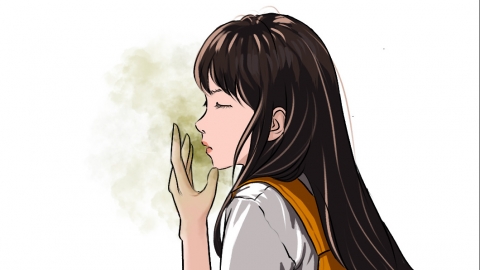What are the symptoms of damp-heat in the lung and stomach?
Generally, damp-heat in the lung and stomach is often caused by consuming spicy, greasy foods or being affected by external damp-heat pathogens, leading to dysfunction of the lung and stomach and internal accumulation of damp-heat. Common symptoms include coughing with yellow phlegm, sore throat and swelling, bitter taste in the mouth, bad breath, epigastric fullness, sticky and unsatisfactory bowel movements, among others. If discomfort symptoms occur, it is recommended to seek timely treatment at a qualified hospital. Detailed analysis is as follows:
1. Coughing with Yellow Phlegm
The lungs govern the regulation of water passages. When the lungs are invaded by damp-heat, their normal function of dispersion and descent is impaired, causing water-dampness to stagnate and generate heat, resulting in increased phlegm production. Under the influence of damp-heat, phlegm becomes thick and yellowish in color. Some patients may also experience chest tightness and shortness of breath, with coughing and phlegm production more pronounced upon waking up or after physical activity.
2. Sore Throat and Swelling
The lung meridian passes through the throat, and stomach heat tends to rise upward to the throat. Accumulated damp-heat in the lungs and stomach travels along the meridians to affect the throat, causing congestion and swelling of the throat mucosa, resulting in soreness, redness, and increased discomfort during swallowing. Some patients may also experience a foreign body sensation in the throat and hoarseness.

3. Bitter Taste and Bad Breath
The stomach is responsible for receiving and ripening food. When damp-heat accumulates in the stomach, digestion and metabolism are impaired, causing turbid qi to rise upwards, leading to a bitter taste in the mouth and noticeable bad breath. This kind of halitosis often has a sour or foul odor, and even after oral hygiene, the unpleasant smell is difficult to eliminate completely, especially when fasting or after consuming greasy foods.
4. Epigastric Fullness
Damp-heat obstructing the stomach can impair its function of receiving and ripening food, causing impaired gastric qi flow and resulting in a sensation of fullness and discomfort in the epigastric region. Patients often feel bloated and pressured in the upper abdomen, with symptoms worsening after eating. They may also experience poor appetite, nausea, and a desire to vomit. Palpation of the epigastric area typically does not reveal significant pain, but the feeling of fullness intensifies.
5. Sticky and Unsatisfactory Bowel Movements
Heat from the stomach moving downward to the intestines combines with dampness, leading to dysfunction in intestinal peristalsis. The sticky nature of damp-heat causes stools to become viscous, often sticking to the toilet bowl and difficult to flush away completely. Bowel movements are often unsatisfactory, with a persistent feeling of incomplete evacuation. Some patients may also experience short and dark-colored urine and a burning sensation around the anus.
In addition, individuals with lung and stomach damp-heat may also experience oily facial skin, acne breakouts, and a yellow, greasy tongue coating. In daily life, it is important to maintain a light diet, reduce the intake of spicy, greasy, and sweet foods such as barbecued items and cakes, and maintain regular sleep patterns, avoiding late nights, to help alleviate discomfort.




